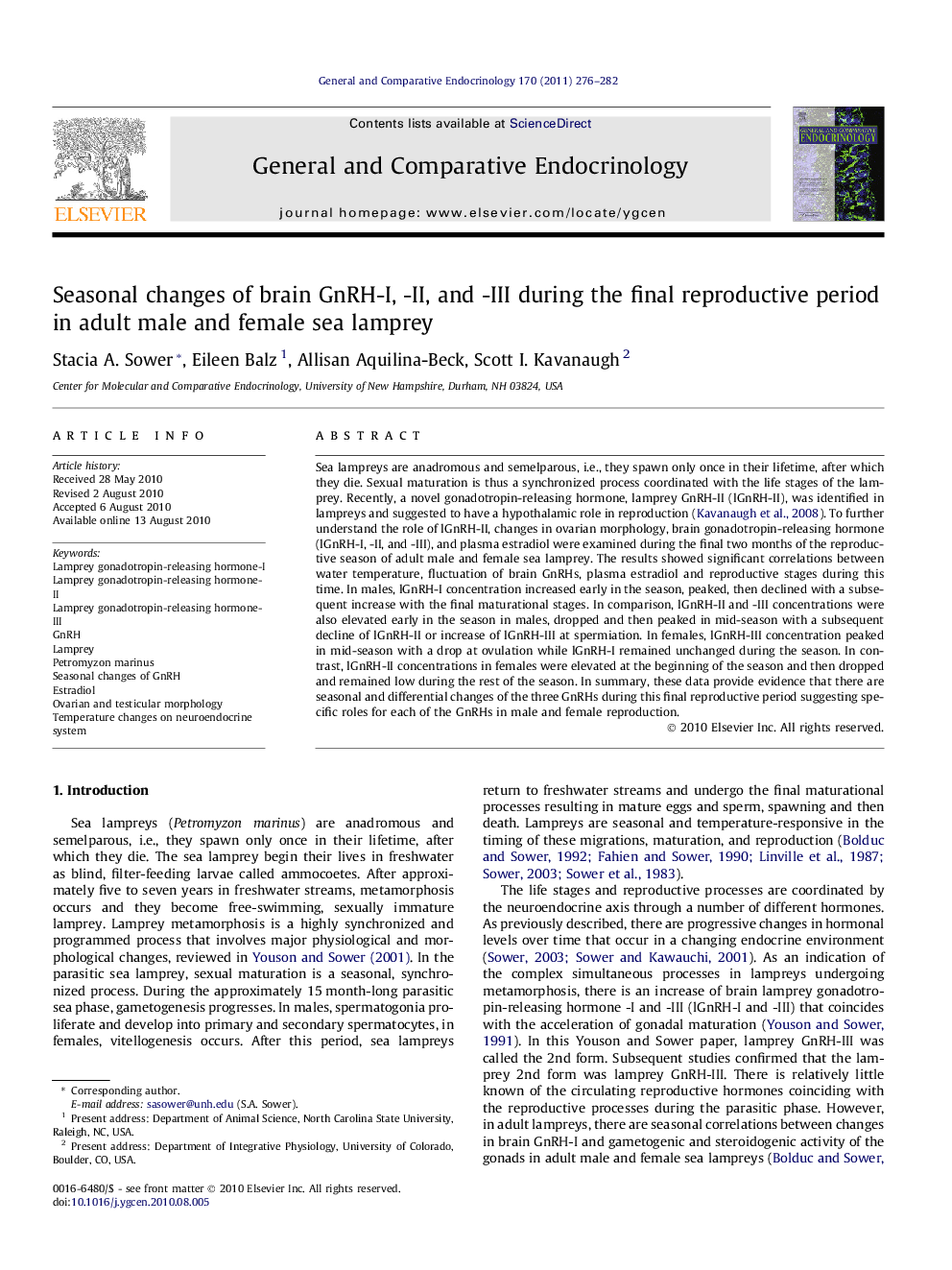| Article ID | Journal | Published Year | Pages | File Type |
|---|---|---|---|---|
| 2801067 | General and Comparative Endocrinology | 2011 | 7 Pages |
Sea lampreys are anadromous and semelparous, i.e., they spawn only once in their lifetime, after which they die. Sexual maturation is thus a synchronized process coordinated with the life stages of the lamprey. Recently, a novel gonadotropin-releasing hormone, lamprey GnRH-II (lGnRH-II), was identified in lampreys and suggested to have a hypothalamic role in reproduction (Kavanaugh et al., 2008). To further understand the role of lGnRH-II, changes in ovarian morphology, brain gonadotropin-releasing hormone (lGnRH-I, -II, and -III), and plasma estradiol were examined during the final two months of the reproductive season of adult male and female sea lamprey. The results showed significant correlations between water temperature, fluctuation of brain GnRHs, plasma estradiol and reproductive stages during this time. In males, lGnRH-I concentration increased early in the season, peaked, then declined with a subsequent increase with the final maturational stages. In comparison, lGnRH-II and -III concentrations were also elevated early in the season in males, dropped and then peaked in mid-season with a subsequent decline of lGnRH-II or increase of lGnRH-III at spermiation. In females, lGnRH-III concentration peaked in mid-season with a drop at ovulation while lGnRH-I remained unchanged during the season. In contrast, lGnRH-II concentrations in females were elevated at the beginning of the season and then dropped and remained low during the rest of the season. In summary, these data provide evidence that there are seasonal and differential changes of the three GnRHs during this final reproductive period suggesting specific roles for each of the GnRHs in male and female reproduction.
Research highlights► Lampreys are one of the very few vertebrates that have three hypothalamic GnRHs. ► This is the first report examining changes of GnRH in male and female lampreys during the final maturational period. ► The differential changes of the three GnRHs during this final reproductive period suggests specific roles for each of the GnRHs in male and female reproduction.
